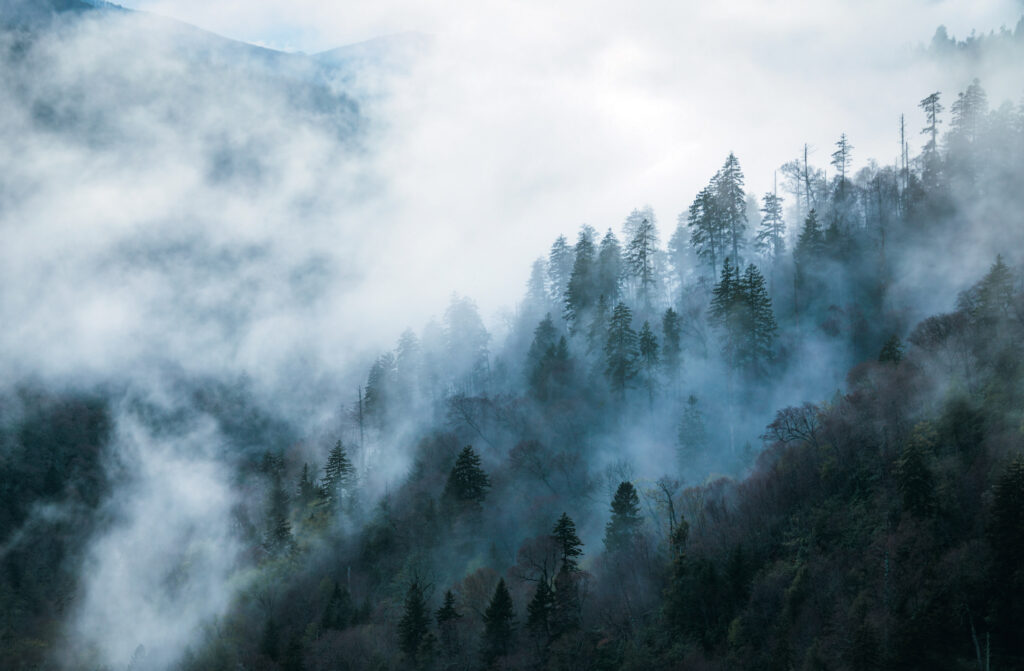“Smoky Mountains After the Rain”
Canon EOS 5D Mark IV, EF 28-300mm f3.5-5.6L IS USM at 100mm, ISO 100, f3.5-5.6 at 1 second, Gitzo tripod
Weather is a constant variable for nature photographers. I’ve experienced unexpected downpours, high winds, thunderstorms and subfreezing temperatures that have all changed the outcomes of photo shoots.
Unlike baseball, however, a downpour might not cancel the entire day. But it can definitely change your plans quickly, bringing unplanned opportunities.
I recently visited the Gatlinburg area of the Great Smoky Mountains National Park to lead a photography workshop. The hands-on assignment for the day, to photograph the Middle Prong of the Little Pigeon River, got rained out.
We punted on the workshop that afternoon, but radar indicated that the storm might clear by late afternoon and early evening. Hoping for a parting of the clouds around sunset, I drove up the Newfound Gap mountain pass road. At the top, where the states of North Carolina and Tennessee meet, the clouds were socked in so thick I couldn’t see from one end of the parking lot to the other. Continuing up to Kuwohi, formerly known as Clingmans Dome, the clouds were even thicker.
I stayed until almost sunset, and the clouds didn’t lift. On the drive up, I had seen some fog wafting through the valley below the Morton Overlook parking area.
I decided to cut my losses and head back down the mountain. Wondering if this day was going to be a total bust for any photography, I was blessed to find this scene at Morton Overlook. I watched the fog and clouds dance in the valley below for about 15 minutes until darkness fell across the landscape.
The rising fog undulated and wafted along with the air currents, silhouetting the trees beautifully. It was as if nature performed a symphony for my eyes while the sounds of rushing water and calling birds faded with the daylight into the night.
To find out more about the Great Smoky Mountains National Park, check out nps.gov/grsm/index.htm.




